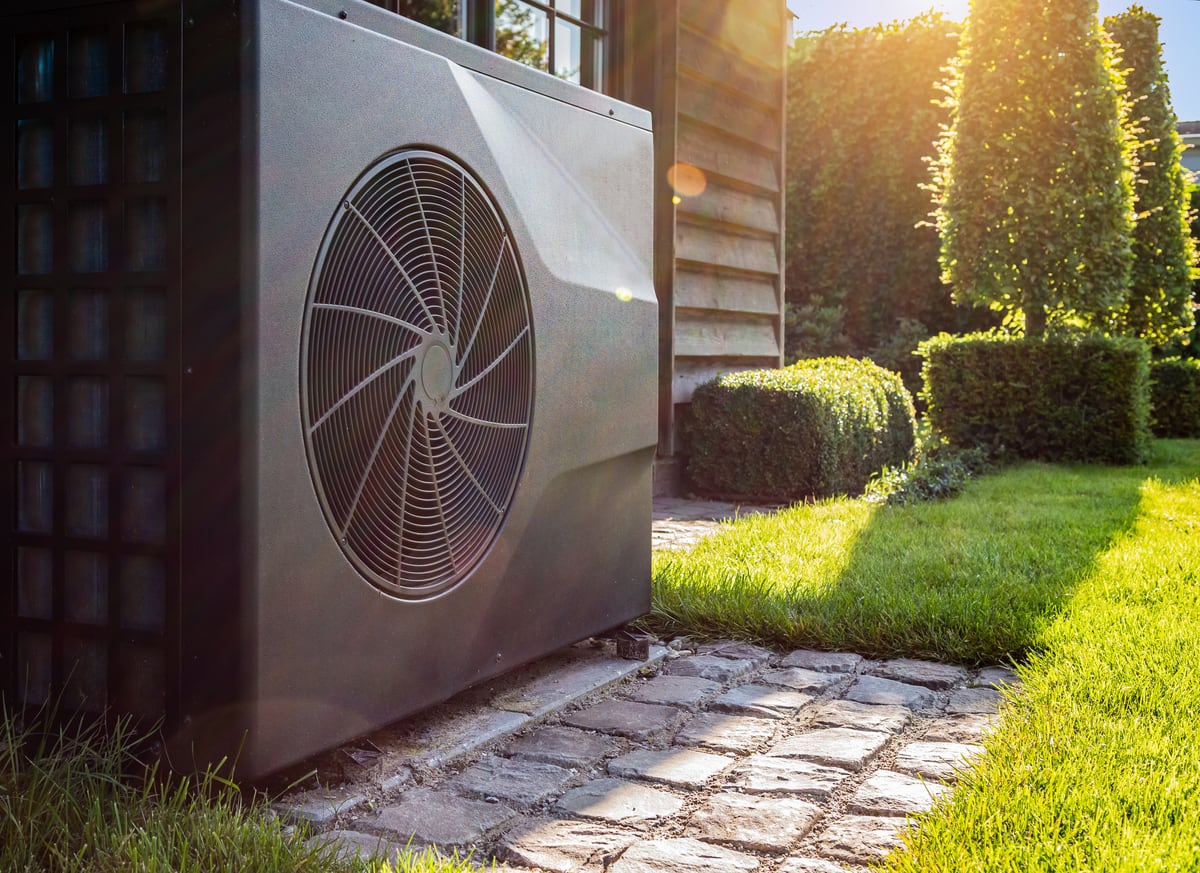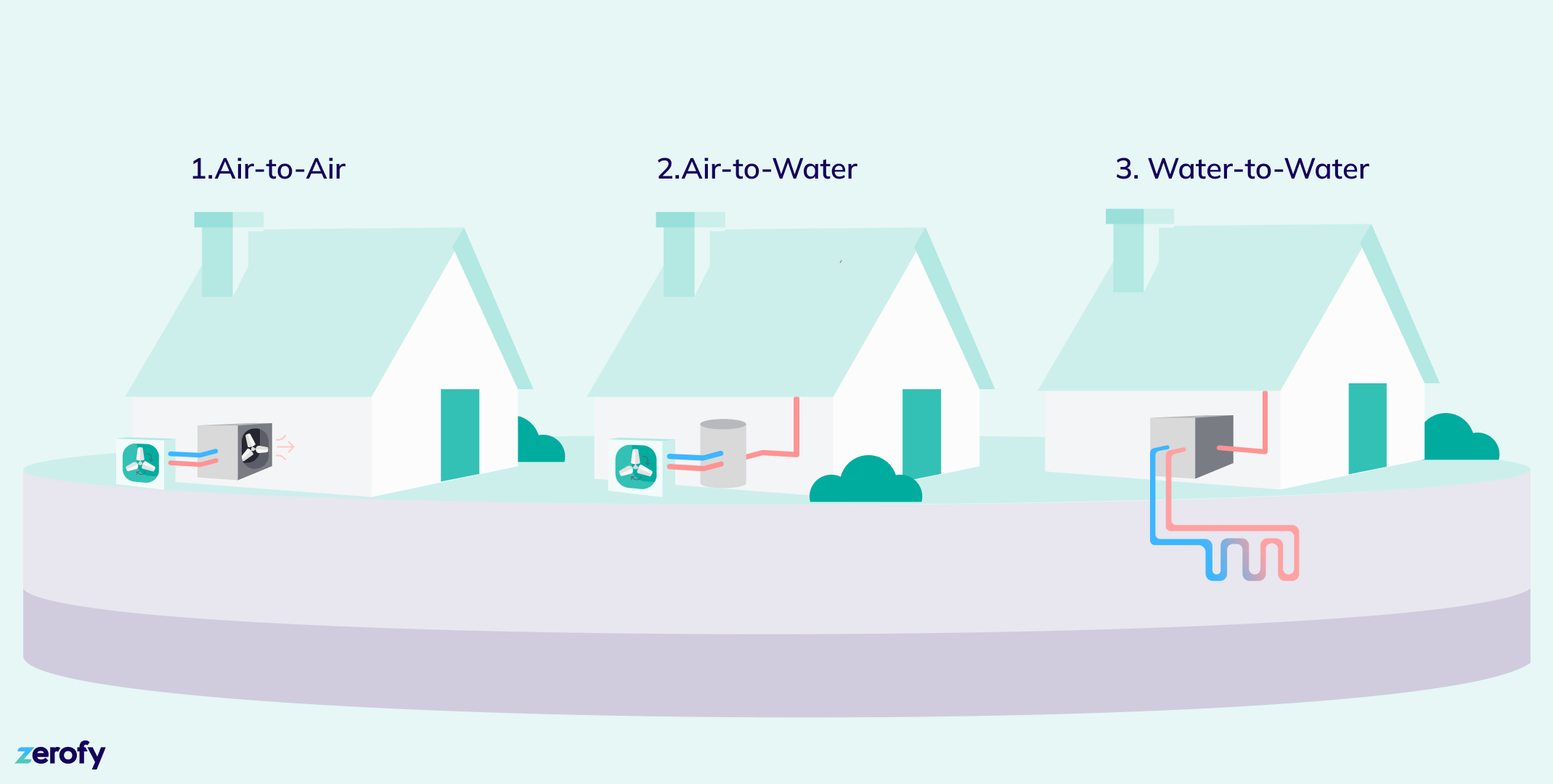Heat pumps 101: How they work and emissions reductions capabilities
The heating of homes makes up a high share of energy use in countries that have variable and cold climates. In the European Union in 2020, home heating was the main use of energy by households at 62.8% of final energy consumption in the residential sector [1]. Additionally, 15% was used for water heating. At the same time, oil and gas are still the main fuels burned by most local boilers [2].
Electricity is used for heating mainly in countries where there has traditionally been a lot of inexpensive electricity available either from hydro or nuclear, places like Scandinavia and France. There are two ways to heat with electricity: electrical resistance heaters and heat pumps. Heating rooms with electrical resistance heaters is not very efficient compared to using heat pumps. With electrical resistance heaters, the heat that you get for one unit of electricity (kWh) can be maximum one unit of heat energy. On the other hand, for one unit of electricity, heat pumps can provide up to five units of heat.

How do heat pumps work?
The working principle of all different types of heat pumps is the same – they take energy from a low temperature environment and transfer it to a higher temperature environment. This might sound like magic, but it is based purely on thermodynamic principles. To move heat in the opposite direction from its natural flow (hot to cold), work must be done. In heat pumps the work is done by a compressor that uses electrical energy for compressing refrigerant inside a closed loop. The working medium is then compressed and sent to a condenser where the heat is extracted and used in the house. The medium passes the expansion valve where the pressure and temperature are decreased. In the evaporator, low temperature energy from the outside is being obtained, and thereafter the process repeats by the heat transfer medium entering the condenser again.
Types of heat pumps
Heat pumps are often classified by which heat transfer medium is utilised outside and inside the building. The different types of heat pumps are air-to-air, air-to-water and water-to-water heat pumps.

1. Air-to-Air
Air-to-air (aka air source) heat pumps are the simplest and also the most inexpensive heating device. An air-to-air heat pump takes air from the outdoor environment and transfers its heat energy to indoor air output. These heat pumps do not require digging or drilling in the yard, and there are no underfloor works inside the home. This means the installation can be low cost and may only take one day. A big benefit of air source heat pumps is that they can also be used for effective cooling during the summer without building cooling ducts inside the house. A significant downside is that for bigger houses you have to install many to cover all of the rooms. The outside units also create noise and it can be hard to find installation locations for houses where architectural constraints exist. Energy savings from air source heat pumps tend to be lower than from other types of heat pumps, especially in colder climates.
2. Air-to-Water
If a house has underfloor heating but limited yard space, an air-to-water heat pump could be used. Here again the outside air is taken as a heat source, but the heat energy is transferred to water-based heating systems in the house. This type of heat pump makes more sense if the climate is colder, and if it is intended to serve as the main heating and hot water production device. Installation of the outside unit is almost as easy as with air-to-air pumps, but inside it can be more complicated and costly. These pumps tend to have lower efficiency than ground source heat pumps (below), especially in colder climates. However, that is compensated by slightly lower installation costs.
3. Water-to-Water
Water-to-water (aka ground source) heat pumps are the real kings of heat pumps. In this type of heat pump outside heat is collected through water pipes instead of from the air, and then transferred to indoor water for heating like in the air-to-water case. If a household is willing to have a longer installation time and higher cost, the benefits of this kind of heat pump are substantial. You can either lay a horizontal collector that occupies about 400 m2,or put the pipes in a vertical borehole that does not use much land. Once the installation is complete, you can enjoy silence in your garden and the best efficiency that heat pumps can give you. Since the temperature in the ground is very stable year round (around +5 degrees), it allows for efficient cooling on hot summer days, and heating during harsh winter conditions. This type of heat pump has also started to be used in some countries for district heating to use the energy during extra windy periods. In this kind of situation, the heat from outside would be taken from lakes or the sea.
Benefits of using heat pumps for space heating
There are multiple benefits of using heat pumps compared to other heating technologies.
1. Higher efficiency and reduced emissions.
Heat pumps use less electricity to do the same work as electrical resistance heaters. And obviously in contrast to gas and oil heating they don’t rely on fossil fuels. This means that your home heating and cooling needs can be met with no loss in comfort, but the emissions produced in the process will decrease. This can result in a reduced carbon footprint (and bills!) for your household without having to make big changes to your lifestyle. Some households may also find heat pumps enhance their lifestyle by adding a home cooling mechanism in summer that their previous setup lacked.
2. Stabilise electricity systems
By installing smart heat pumps that can switch their heat production to low price hours, they help to stabilize the electricity systems with high renewables penetration. Eventually, the hours with lower prices will overlap with low emission production times.
3. Low maintenance
Once installed, heat pumps are a low maintenance home heating and cooling system compared to combustion based systems. Some technical checks should be performed by the homeowner once a year, and a professional installer should do a comprehensive inspection every three-to-five years. Plus, heat pumps have a long life span of between 10-15 years, meaning you won’t need to frequently re-install a new heat pump.
Interested in other ways to reduce your household emissions?
Connected and smart heat pumps
Most heat pumps nowadays have their own app for adjusting the temperature and setting working times remotely. Some manufacturers, like NIBE from Sweden, enable their devices to control the heat pumps according to the electricity spot prices. Assuming prices correlate with CO2 emissions, you can tell your heat pump to work during the cheapest and greenest hours (learn more about carbon intensity here). By switching the consumption, it helps to balance the grid and to allow more renewables to enter. This is possible without installing more electricity storage but by using the thermal inertia of your building for storing electricity converted to heat.